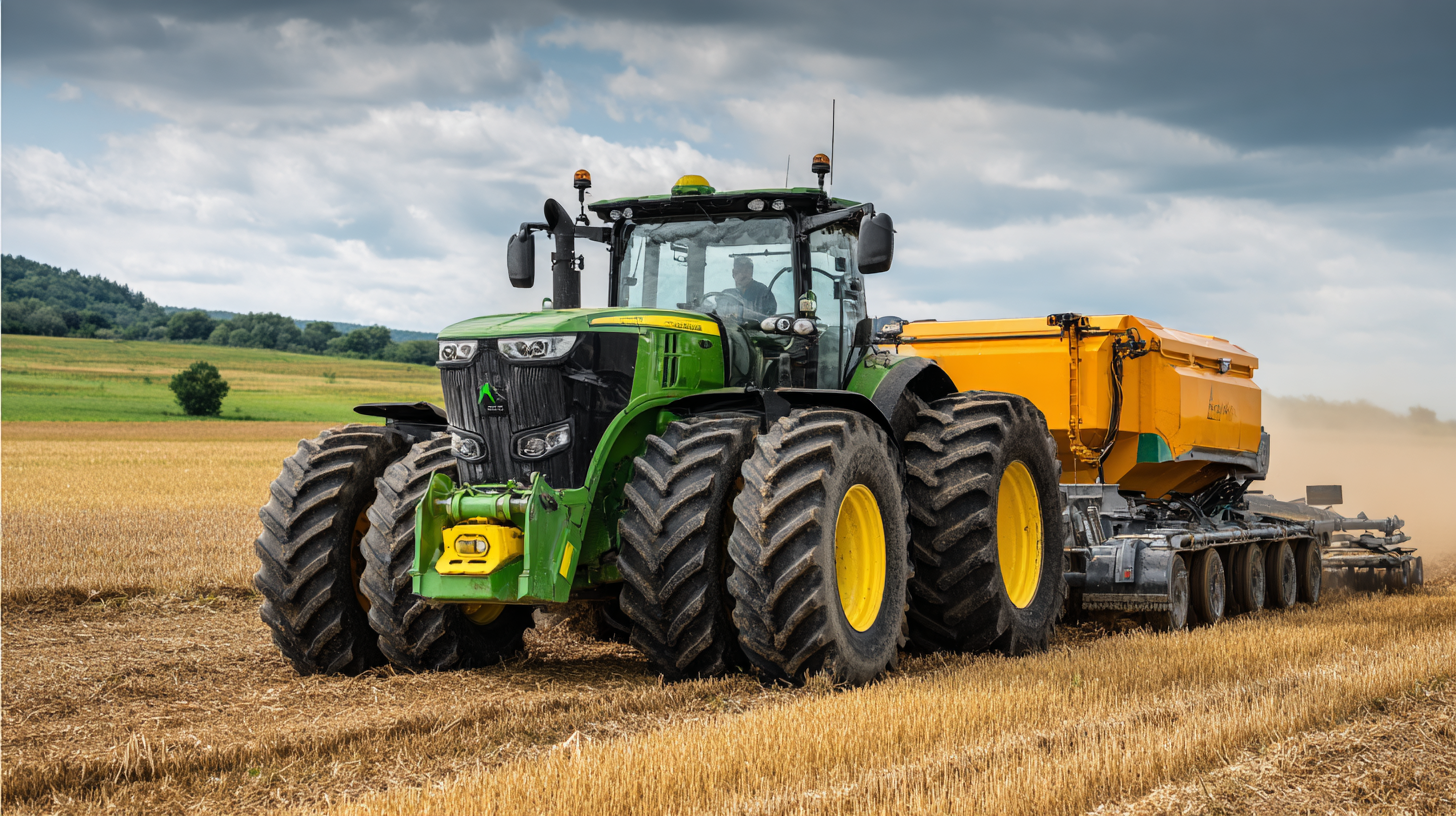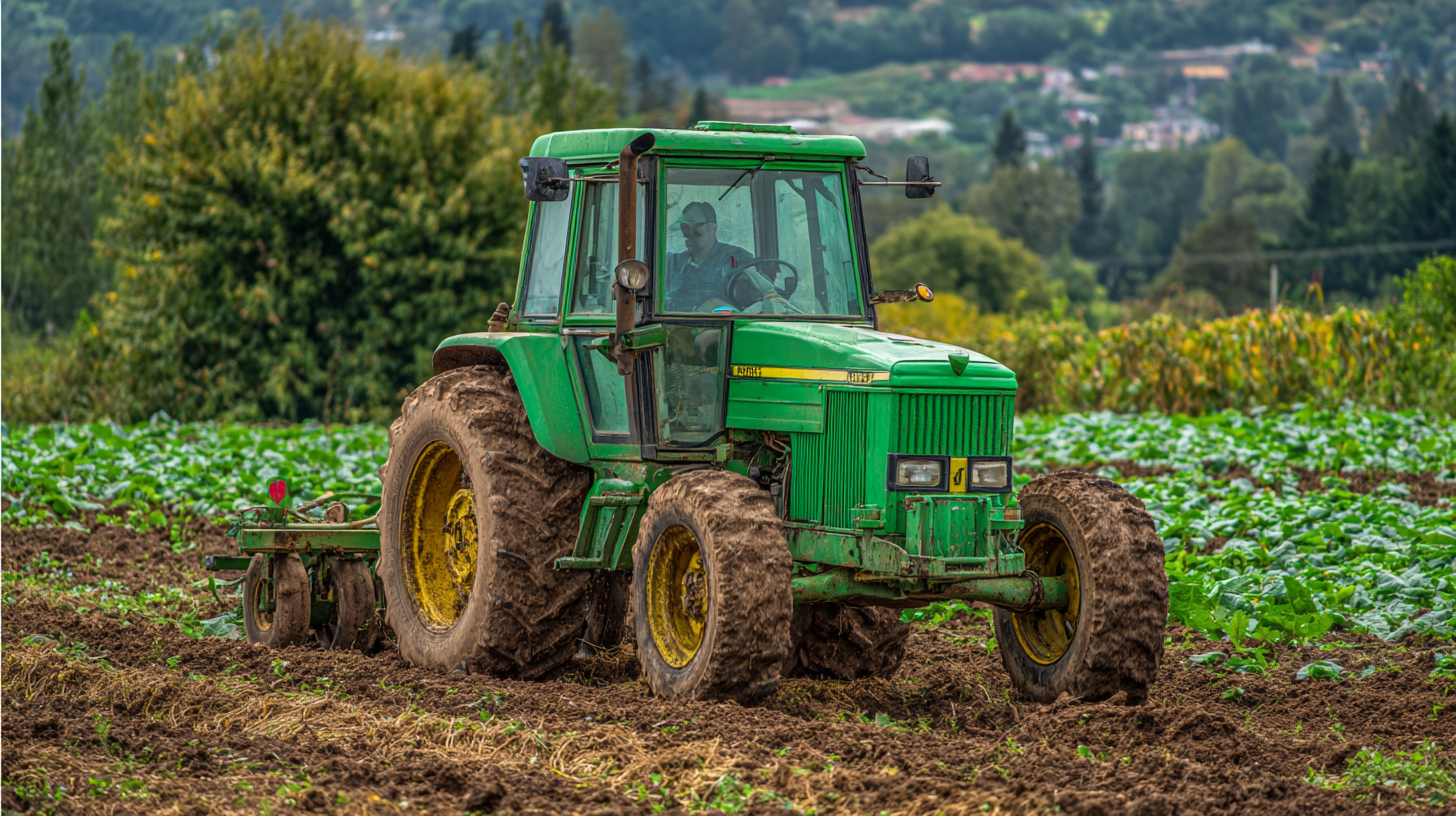In the ever-evolving landscape of modern farming, the importance of employing advanced agriculture equipment cannot be overstated. According to a report by the Food and Agriculture Organization (FAO), the global agricultural output must increase by 70% to meet the demands of an expected population of 9.7 billion by 2050. This escalating need for efficiency and productivity highlights the critical role that sophisticated farming tools play in optimizing crop yields and resource management.

From precision seeding to automated irrigation systems, the integration of cutting-edge technology equips farmers with the means to enhance sustainability while navigating the challenges posed by climate change and limited arable land. By leveraging the best agriculture equipment, farmers can not only improve their operational effectiveness but also contribute to the broader goal of ensuring global food security.
Emerging technologies are set to revolutionize agriculture by 2025, creating a significant impact on farming practices worldwide. According to a report by Markets and Markets, the global precision agriculture market is forecasted to reach $12.9 billion by 2027, growing at a CAGR of 12.2%. This rapid growth signifies the increasing adoption of technologies such as GPS-guided equipment, soil sensors, and drone technologies, which enhance crop monitoring and resource management. Farmers can now make data-driven decisions, thereby optimizing yields and reducing waste.

Another key technology shaping the future of agriculture is artificial intelligence (AI). A study from Statista highlights that by 2025, AI in the agricultural sector is projected to reach a market size of $2.6 billion. AI applications, including machine learning algorithms, are being utilized for predictive analytics and crop disease management, allowing farmers to proactively address potential issues before they escalate. Furthermore, the rise of blockchain technology is promoting transparency in supply chains, ensuring that consumers can trace the origin of their food products. These innovations are not only improving efficiency but also contributing to more sustainable farming practices, paving the way for a more resilient agricultural system in the future.
Investing in top agricultural equipment is not merely a choice but a strategic decision that can significantly enhance crop yields and operational efficiency. According to a report by the American Society of Agricultural and Biological Engineers, using advanced machinery can increase productivity by 20-25%, translating to higher revenues even after accounting for initial costs. While the upfront investment might seem daunting, the long-term benefits far outweigh the expenditures. For instance, precision agriculture tools, which can range from GPS-guided tractors to drones, have been shown to reduce input costs by as much as 15% through optimized resource use.
When considering the cost-benefit ratio, it's essential to evaluate the specific needs of your operation. Here are some tips: first, assess the types of crops produced and select equipment that maximizes efficiency for those specific plants. Second, explore financing options such as leasing or government grants to spread costs more manageably. Finally, factor in the equipment's depreciation rate; investing in durable, reliable machinery can provide years of service and avoid costly downtime. By carefully analyzing these factors, farmers can make informed decisions that foster sustainable growth and profitability in modern farming.
The integration of innovative alternatives to traditional farming tools is revolutionizing modern agriculture. As the global agriculture tractor market is expected to grow significantly, reaching a staggering $88.9 billion by 2030, it is clear that farmers are increasingly utilizing advanced technologies. Precision agriculture, digital farming, and drone applications are enhancing productivity and resource management, fundamentally changing the way farming is conducted.
Tips for farmers looking to adopt these innovations include investing in smart technology. Drones, for instance, can provide real-time data for crop monitoring and pest management, which is essential for effective agriculture today. Additionally, utilizing data analytics can help optimize planting schedules and improve yield predictions.
Furthermore, bioeconomy principles offer a pathway for sustainable development in agriculture. By prioritizing green technologies and practices, farmers can not only address global challenges such as climate change and food security but also create a resilient agricultural framework. Embracing innovative technologies while adhering to sustainable practices is the key to fostering long-term growth in the agricultural sector.

The integration of automation and artificial intelligence (AI) into modern agriculture is revolutionizing the way farms operate, enhancing efficiency and productivity. Recent innovations highlight the role of precision agriculture, which employs advanced tools to analyze soil conditions, crop health, and weather patterns, leading to optimized input use and higher crop yields. According to industry reports, the adoption of smart farming technologies could increase crop productivity by up to 20%, significantly contributing to food security and sustainability.
AI-driven automation is also transforming traditional agricultural practices. By utilizing AI systems, farmers can automate irrigation, pest control, and harvesting, reducing labor costs and minimizing human error. Data analytics derived from Internet of Things (IoT) devices offer farmers valuable insights into their operations, fostering informed decision-making. Research indicates that employing automated irrigation systems alone can save up to 30% of water usage, showcasing the potential for significant environmental benefits alongside economic gains in the farming sector. This technological evolution not only addresses immediate operational challenges but also aligns with broader goals of sustainable and responsible agricultural practices.
| Feature | Description | Benefit | Impact on Yield |
|---|---|---|---|
| GPS Technology | Utilizes satellite signals for precise positioning. | Increases planting accuracy and reduces waste. | Up to 15% increase in crop yield. |
| Drones | Monitors crop health and soil conditions from the air. | Provides real-time data for better decision making. | Potentially 10-20% more effective resource management. |
| Automated Irrigation Systems | Watering based on real-time moisture levels detected in the soil. | Reduces water usage and labor costs. | Improves yield consistency by up to 30%. |
| AI-Powered Analytics | Analyzes large datasets for predictive analysis. | Helps farmers make informed decisions regarding crop management. | Enhances productivity by around 20%. |
| Robotic Harvesters | Machines designed to pick crops efficiently and with precision. | Reduces labor costs and harvest time. | Can increase harvest quality by up to 25%. |
The future of agriculture is increasingly leaning towards sustainability, with innovations in agricultural equipment playing a pivotal role. As we approach 2025 and beyond, farmers must embrace trends that not only enhance productivity but also minimize environmental impact. Modern farming equipment is being designed with energy efficiency, reduced emissions, and resource conservation in mind. This shift not only meets regulatory standards but also appeals to a growing base of consumers who prioritize sustainability.
One key trend is the integration of precision farming technology, which allows for better resource management. By utilizing GPS and data analytics, farmers can optimize input use, reducing waste and cost. Additionally, investing in electric or hybrid machinery can significantly cut down on fuel consumption, contributing to lower carbon footprints.
**Tip:** When selecting agricultural equipment, consider models that are compatible with renewable energy sources, such as solar panels or biofuels, to further enhance sustainability.
Another noteworthy trend is the development of smart farming tools that enable real-time monitoring of crops and soil health. These tools help farmers make informed decisions, leading to healthier yields with less environmental strain.
**Tip:** Look for equipment with built-in IoT capabilities, as they can provide valuable insights into your farming practices and improve long-term sustainability efforts.
This chart illustrates the increasing adoption of advanced agricultural equipment in different sectors, emphasizing the trends of sustainability in agricultural practices from 2020 to 2025.